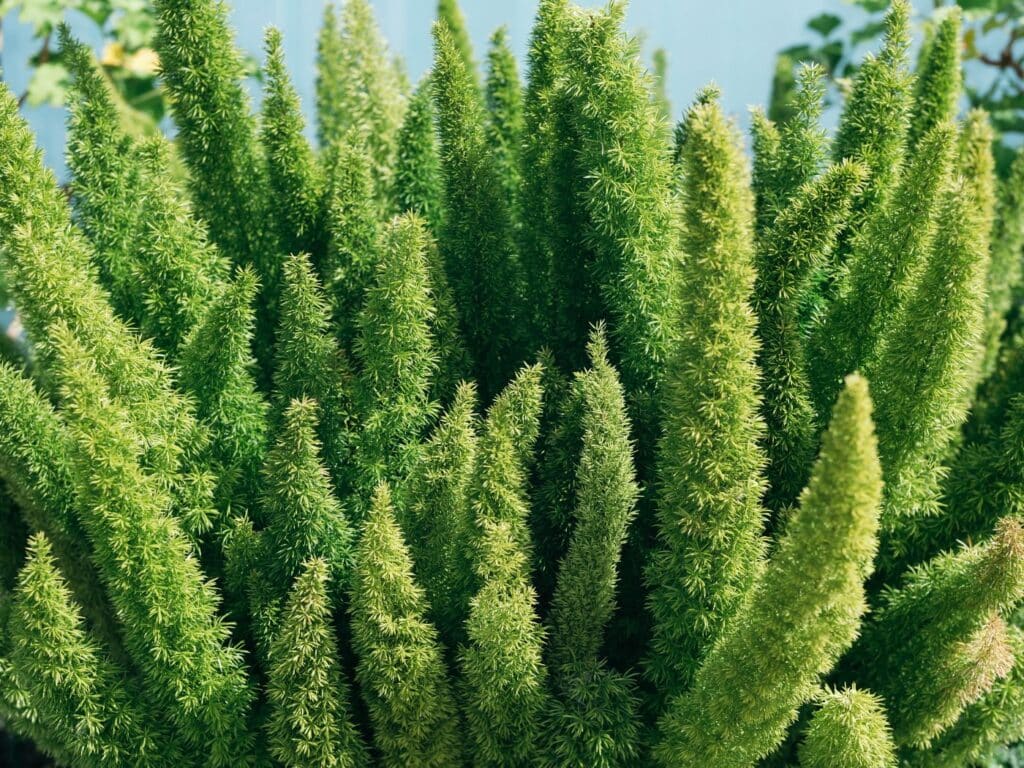Foxtail fern (Asparagus aethiopicus), also known as Myers, asparagus mayers, or cat’s tail asparagus, are probably some of the most interesting plants in your garden. These foliage plants produce luscious, fluffy stems with needle-like leaves in vivid lime green hues. They can also produce tiny white flowers and vivid red berries that can make them look rather striking.
To get the most out of your cat’s tail, you should grow it with companion plants that can enhance the aesthetics of this plant or make it stand out even more.
The best companion plants for foxtail ferns include coral bells, caladiums, begonias, ivy geraniums, or creeping jennies because these will complement your ferns.
Let’s look closer at these companions and the best way to use them to create striking gardens.
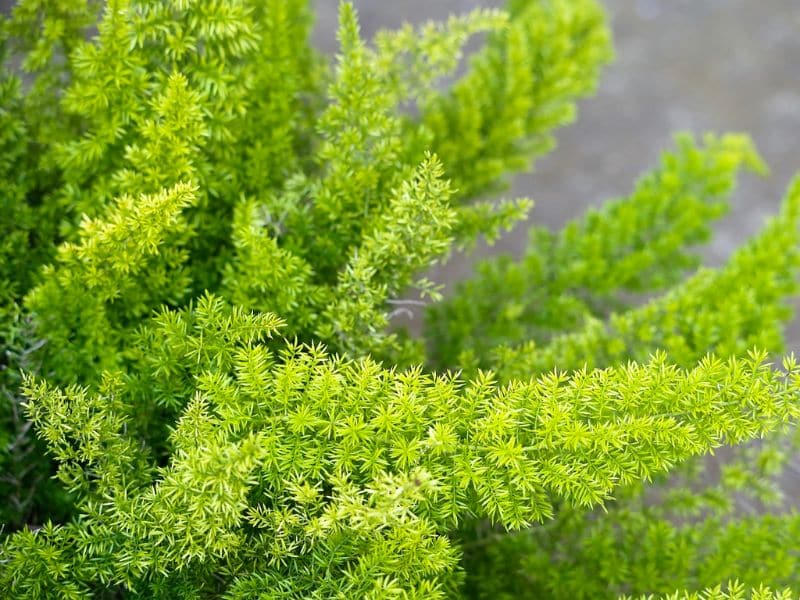
What to Plant with Foxtail Fern
For companion planting, it is always best to combine plant species with similar growing requirements and nutritional needs. This is the easiest way to ensure that all the plants in your container or garden grow healthy and strong.
Foxtail ferns are evergreen perennials that prefer soft light or areas with filtered shade. You can position them where they can get some morning sun, but too much direct sunlight will scorch their delicate leaves. They can also be grown indoors in indirect light.
These low-maintenance plants are drought-tolerant because they have tuberous roots that store water. They should only be watered once a week and prefer well-drained, slightly acidic soil.
Here is a quick look at some companion plants that can grow well in light shade and look charming next to your cat’s tails.
Coral Bells
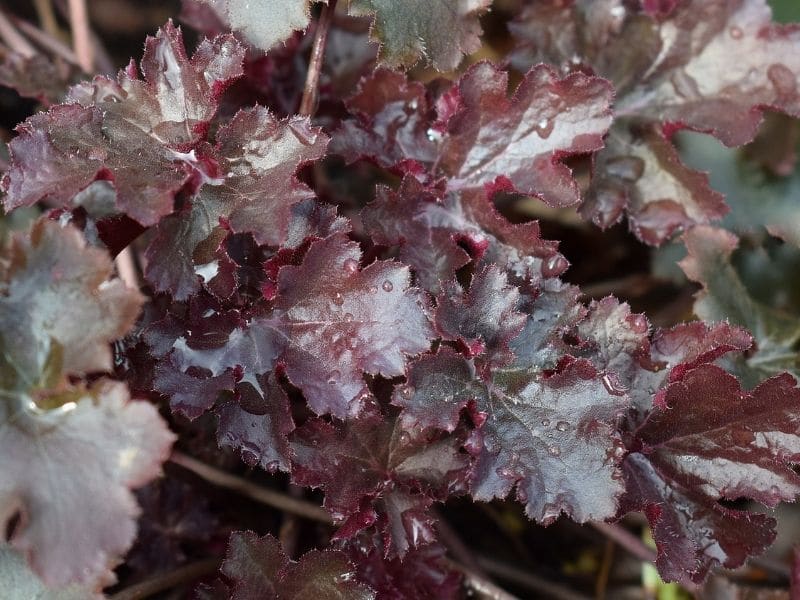
Coral bells (Heuchera sanguinea), alumroot, is a perfect filler plant to grow next to or around foxtail ferns. The bright leaf colors of these evergreen perennials will accentuate the vivid green foxtail spikes.
Alumroots are sensitive to sunlight and should be grown in partial shade. In cold climates, they can tolerate a little bit of direct sun. They should be grown in well-drained, moist soil, and they take well to slightly acidic or neutral soil types. Avoid planting them in clay soils, or their root systems will quickly rot.
The best way to combine alumroots and foxtail fern is by growing these bright foliage species around the foxtails so those frisky lime green leaf spikes can create a fountain above them. It is also best to combine contrasting colors of coral bells like dark plum, bright chartreuse, roasted silver, or red with bright green foxtails.
Caladiums
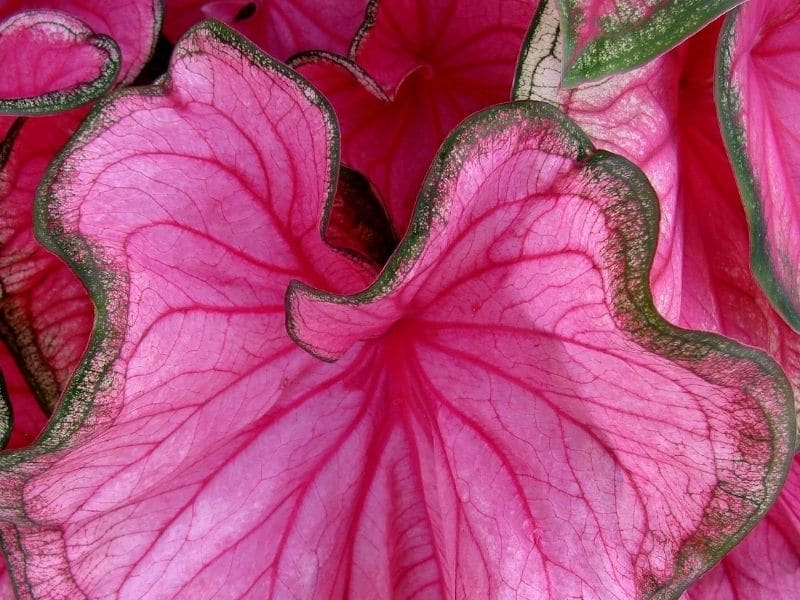
Caladiums (Caladium), also known as angel wings or elephant ears, can be good companion plants if you are looking for a good backdrop for your ferns. Caladiums can look rather striking with their two-toned heart-shaped flowers.
Elephant ears grow well in free-draining soil that is kept a little bit moist and prefer shade positions with lots of indirect light and warmer climates.
These striking foliage plants are quite tall and can grow vigorously during their growing season. As such, it is best to grow them behind your foxtail fern plants.
Gardeners should also take note that caladiums become dormant during the wintertime. Their leaves can be trimmed off when they die back for winter, giving your foxtail ferns a little more natural light than they require for the colder months.
Begonias
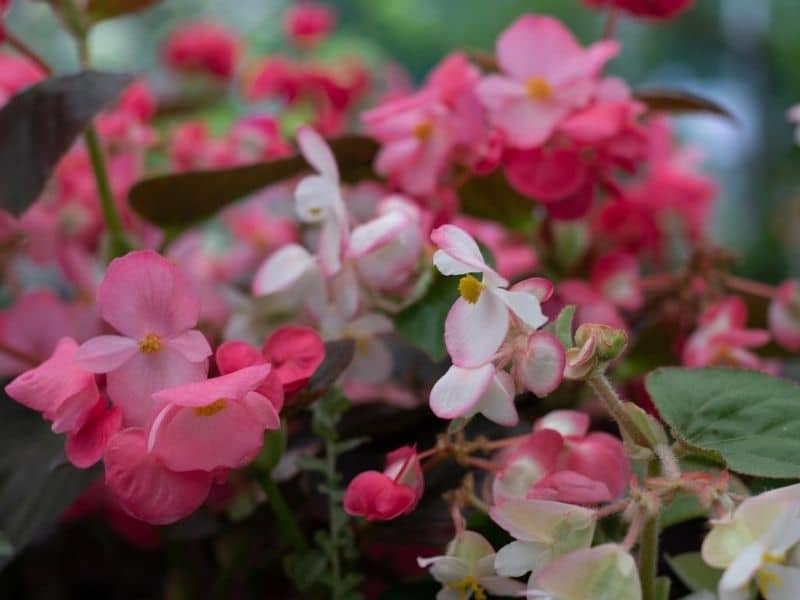
Begonias (Begonia cucullata), also known as wax begonia, are good options to add lots of color to your garden. There are thousands of different species of begonias in a huge variety of flower colors that can add lots of contrast to your garden.
These flowering plants prefer a sheltered position with moist but well-drained soil and can become scorched in direct sunlight.
The best way to combine begonias is by growing them next to or before foxtail ferns. The vivid flowers and waxy leaves will add lots of texture to your garden, fill out your containers, and allow the ferns to create a showy effect when they stand out behind these waxy plants.
Ivy Geraniums
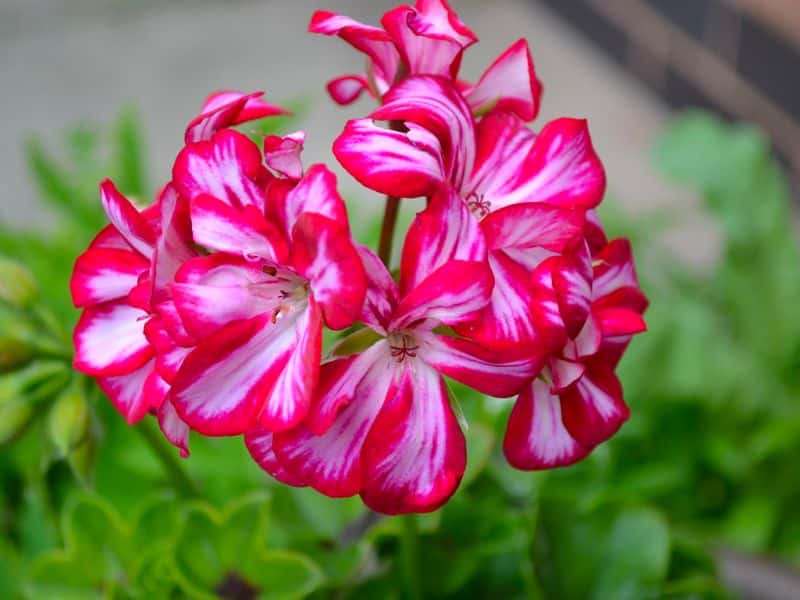
Ivy geraniums (Pelargonium peltatum), also known as wild sorrel or wildemalva, is a good filler and spiller plant to grow with foxtail ferns. There are many species of this waxy flowering plant in various flower colors.
Wildemalvas are at their happiest in a partial shade position and take well to any well-drained soil. As with foxtail ferns, they are drought-tolerant and only need to be watered once a week.
Some species of ivy geranium can grow tall and bushy and should be planted behind your foxtail ferns. Shorter vine varieties can be grown in the front to trail over the edge of your container or garden bed.
Creeping Jenny

Creeping jenny (Lysimachia nummularia), also known as moneywort, herb twopence, and twopenny grass, is an excellent spiller plant to pair with foxtail ferns. These ground cover plants are even more vibrant in color than foxtail ferns.
Creeping jennies should be grown in shaded positions with lots of indirect light. They must be watered more often than foxtail ferns and can grow well in most soil types.
These vine plants can be included as a ground cover in your garden bed or used in hanging baskets with ferns so they can ‘spill’ over the edge of your baskets.
What NOT to Plant with Foxtail Fern
Foxtail ferns won’t survive if they get too much direct sunlight. They need to be grown in dappled shade areas which means they won’t cope well alongside any sun-loving plant species.
It is best to avoid planting sun-dependent plant species like lavender, dusty miller, roses, marigolds, and peonies. These plant species require lots of direct sunlight and won’t flower or can become leggy if they are grown in the same area as foxtail ferns.
Landscaping Ideas for Foxtail Fern and Companions
After discovering so many great companion plants for foxtail ferns, it is time to discover different ways to combine them in your garden spaces. Let’s explore a couple of creative ways to use these ferns and their companions to create a more beautiful garden.
Use Foxtail Fern in Mixed Containers
The Foxtail fern is an ideal thriller plant because its tall spiky branches attract lots of attention and it can grow well in containers and hanging baskets.
You can combine it with a contrasting filler plant like coral bells, ivy geranium, or begonia flowers to fill out your container and enhance aesthetics.
Complete this mixed container with a vine plant such as creeping jenny or ivy geranium that can trail over the edge of your container and you will have a perfect flower arrangement for your patio.
Use Foxtail Fern for Showy Borders
These ferns can also be used to create showy borders in front of rocky walls or along your home. It is best to pair them with filler plants of a similar height like ivy geraniums, begonias, or coral bells to create a mixed border with lots of contrast and interest.
You can also add a couple of caladiums here and there to add some height and dimension to your mixed borders.
Final Thoughts
Foxtail fern companions like coral bells, begonias, ivy geraniums, caladiums, and creeping jenny enhance the natural beauty of these plants and fill out your garden spaces.
We hope that our guide made it a little bit easier to select suitable companions and that your cat’s tails will grow healthy and strong alongside its new friends.
See more:
Image by apagafonova/depositphotos

